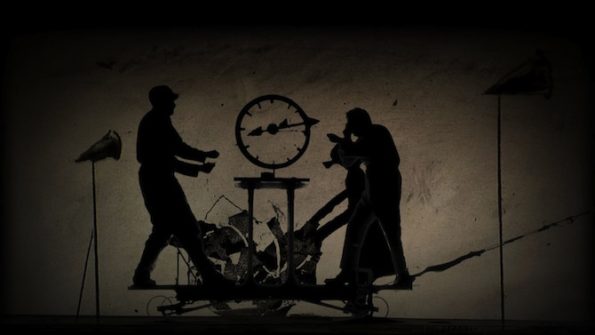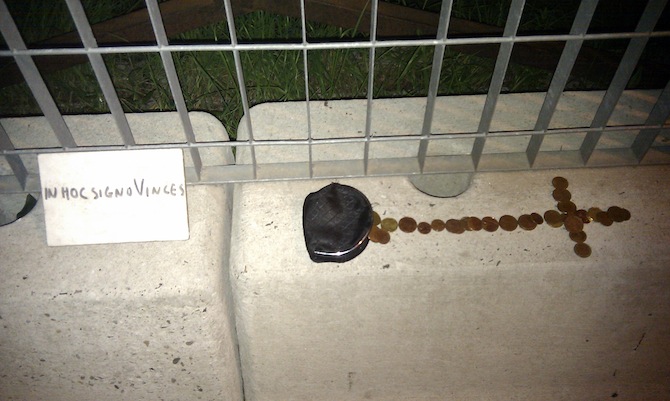Search
To search for an exact match, type the word or phrase you want in quotation marks.
A*DESK has been offering since 2002 contents about criticism and contemporary art. A*DESK has become consolidated thanks to all those who have believed in the project, all those who have followed us, debating, participating and collaborating. Many people have collaborated with A*DESK, and continue to do so. Their efforts, knowledge and belief in the project are what make it grow internationally. At A*DESK we have also generated work for over one hundred professionals in culture, from small collaborations with reviews and classes, to more prolonged and intense collaborations.
At A*DESK we believe in the need for free and universal access to culture and knowledge. We want to carry on being independent, remaining open to more ideas and opinions. If you believe in A*DESK, we need your backing to be able to continue. You can now participate in the project by supporting it. You can choose how much you want to contribute to the project.
You can decide how much you want to bring to the project.

To talk of Rome presupposes introducing an endless number of images. We’ll all think of our own, but no doubt we’d coincide in more than one: visions of another time by way of the frescoes housed in the Sistine Chapel, the unbeatable instant created by Michelangelo, ruins that attest to what could have been in times gone by, from the Coliseum or the Theatre of Marcellus, to any remote corner of the Forums. Others, made mythical through the actions of cinematography, would take us to the Trevi Fountain and the exuberant Anita Ekberg of La Dolce Vita. We could go on and on with a never-ending list. We might even agree on personal memories, like that bar in the Trastevere where the Negroni is impeccable, or that hidden away café close to the Piazza del Fico.
One asks, will Rome continue to be the eternal city?
Rome stirs passions. Its surprising capacity for hospitality and mystery, its way of spontaneously dazzling the stroller. Maybe this is one of its major charms, being able to wander, and just when you think you are lost, finding your way. So it stands in honour of its history, with its peerless eclecticism, from the glory and the decadence of the Roman Empire until today. And it’s in this last decadence that I stop and pause.
Maybe I don´t just conceive of wandering. At one moment or another I decide to abandon the narrow streets, bars and cemeteries (literally), to visit some of the temples of contemporary art, lets say, also museums. And even knowing that I might be disappointed, I’m driven by the idea of finding a Kentridge. It takes a lot to reach the MAXXI, it’s badly communicated and off the beaten track. Though, to put it bluntly, the space doesn´t help. I still wonder, does anyone think that this space was designed to be a museum? It is one of the many architectural examples that make it possible to question the basic principles of architecture and even of art, its always worth bearing in mind nulla aesthetica sine ethica. However, I enter, and find myself going up and down bridges and stairs. I arrive. Vertical thinking: could by what I feel but it is the title of the exhibition, the merit isn´t mine. The piece Preparing the flute greets us in the form of a miniature theatre. The installation manages to unite the multiple languages that it employs (music, dance, film, theatre, drawing…) though it doesn´t manage to house projections in the space in the way it usually does.
 Kentridge knows how to wrap the spectator in this atmosphere of nineteenth century fantasy; his scenes drift between Chinese shadows and series of figures that merge with the oneiric. I’d guarantee that all of us who were able to attend The refusal of time in Kassel retain this sort of memory: standing at the end of one of the station buildings, in the darkness but not alone, accompanied by the figurations that appeared on the wall. In the rooms of the MAXXI one discovers a variation of the piece. It is built out of the encounters that he had with the scientist Peter Galison, the musician Philip Miller and Catherine Meyburgh. This time the shadows don´t surround you, it functions in the form of a multiple projection. In the same space we also find the sculptural piece that ends up reminding us of one of the machines invented by Leonardo Da Vinci. The exhibition ends with a few objects used during the preparation of the piece and with other such fragments from previous pieces, be they audio-visuals or in the form of documentation. The pieces each have their own strength, each one of the works that configure the exhibition emanate this poetics of the trace, making it possible to traverse the exigency of the gaze that creates them, dialoguing with the spectator through the category of the fragment. There’s no lack of material, nor does one miss finding what one experienced in Documenta (13). It is more the question of selection, in the order of the discourse as much as in the selection of the elements.
Kentridge knows how to wrap the spectator in this atmosphere of nineteenth century fantasy; his scenes drift between Chinese shadows and series of figures that merge with the oneiric. I’d guarantee that all of us who were able to attend The refusal of time in Kassel retain this sort of memory: standing at the end of one of the station buildings, in the darkness but not alone, accompanied by the figurations that appeared on the wall. In the rooms of the MAXXI one discovers a variation of the piece. It is built out of the encounters that he had with the scientist Peter Galison, the musician Philip Miller and Catherine Meyburgh. This time the shadows don´t surround you, it functions in the form of a multiple projection. In the same space we also find the sculptural piece that ends up reminding us of one of the machines invented by Leonardo Da Vinci. The exhibition ends with a few objects used during the preparation of the piece and with other such fragments from previous pieces, be they audio-visuals or in the form of documentation. The pieces each have their own strength, each one of the works that configure the exhibition emanate this poetics of the trace, making it possible to traverse the exigency of the gaze that creates them, dialoguing with the spectator through the category of the fragment. There’s no lack of material, nor does one miss finding what one experienced in Documenta (13). It is more the question of selection, in the order of the discourse as much as in the selection of the elements.
I go back downstairs and very rapidly, scan the exhibition about Le Corbusier. Without a doubt it is the very space that doesn´t allow a three-sided play off (space-exhibition proposal-spectator).
On another stroll, I roam around the perimeter of the Ara Pacis, the grand altar to peace. So I end up discovering the small micro-installations that a street artist has spontaneously placed: In hoc signo vinces. They all catch my attention and they all have something to offer. Ecco!.

Imma Prieto has for years been marking out three paths from which to reflect about the different contexts that characterise our contemporaneity. Criticism, curating and teaching enable her to think about and establish dialogues from different perspectives and with different objectives, looking for bridges between them. Her research has revolved around performance and video, languages that both arose in the dawn of the sixties that is, in the last years of modernity. Is it because we don´t really know where we are now? Conclusion?
"A desk is a dangerous place from which to watch the world" (John Le Carré)